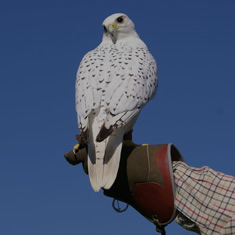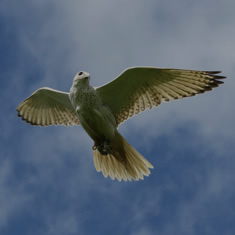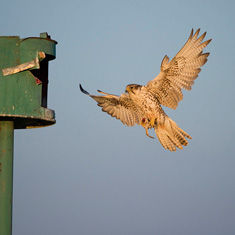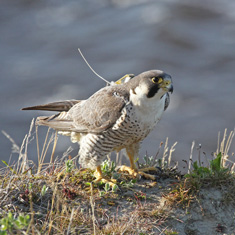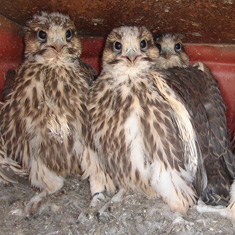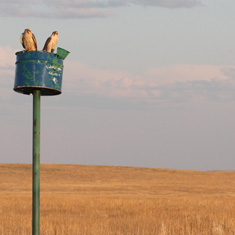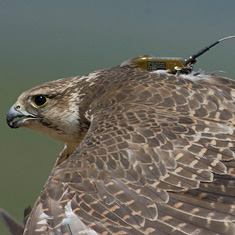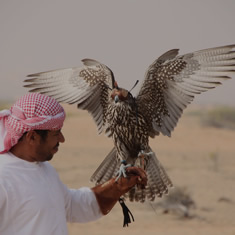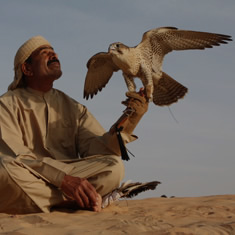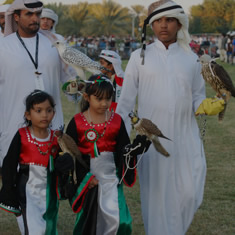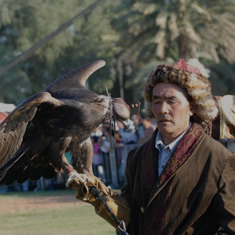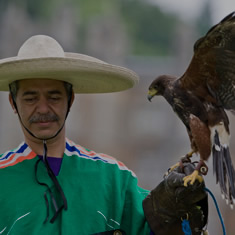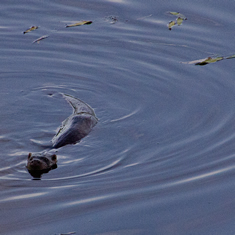- WELFARE ASPECTS OF KILLING WILD ANIMALS IN BRITAIN
An investigation on behalf of the Hawk Board into the nature and extent of suffering caused by current methods of pest control and field sports.
Nick Fox, PhD, BSc, B.Ed
Helen Macdonald BA, MA
CONTENTS
- Introduction
- What is ‘suffering’?
- What is ‘cruelty’?
- The demographics of killing wildlife
- A definition of terms
- A comparison of the methods
- Why animals are killed
- Human enjoyment
- Is suffering acceptable?
- Public attitudes
- Conclusion
- Acknowledgements
- Further reading
- Table 1: A comparison of the methods and criteria: 10
- Table 2: Reasons for, methods and numbers of wild animals killed annually in the UK: 12
- Figure 1: Percentage volume of animals killed by the different methods: insert between pages 10 and 11
1.1. Wildlife welfare is a young science and the difficulties and pitfalls in interpreting data are tremendous. This study paints a broad brush picture of wildlife welfare in the way we use and manage our wildlife as a resource and attempts a broad cost benefit analysis of the different aspects.
It is a primer for those needing a perspective on the issues, a pointer for where future research efforts are needed and a plea for legislators to use a sound scientific approach rather than an emotional one to these complex wildlife management issues.[1]
1.2. The first edition of this study appeared in April 1995. Since then I have had much feedback and additional data, and scientists, such as Professor Patrick Bateson, have made further efforts to measure suffering in wildlife management.[2]
1.3. Few people approach this subject without an opinion. I am a professional biologist working on birds of prey directing conservation programmes in the UK, Europe and Asia. I am a livestock farmer; I hunt with hounds and with falcons and I have done most of the activities such as shooting, ferreting, cat-keeping and fishing examined in this paper.
My position is as follows: I support the sustainable killing of wildlife for food, population management and recreation, provided that suffering is minimised to levels either experienced in nature or in common non-lethal everyday life experiences.
1.4. Whilst acknowledging that religions have both positive and negative impacts on animal welfare and management,[3] they are not substitutes for sound science. Also, the dogma that animals have ‘rights’[4] is not a fruitful one in real life wildlife management. Rather, we should consider our responsibilities towards animals.
Suffer: 1. To undergo, endure. 1. trans. To have (something painful, distressing or injurious) inflicted upon or imposed upon one; to submit to with pain, distress or grief. 3. intrans. To undergo or to submit to pain, punishment or death.
OED
Given that an animal is born, then it must also die. It can meet its death in a variety of different ways, some of which are more painful than others. It might also suffer and survive. Any assessment of this suffering should consider:
2.1. The ability of each species to feel conscious mental suffering.[5]
2.2. The ability of each species to feel physical suffering.[6]
2.3. The link if any between physical suffering and mental suffering: e.g. a horse with a broken leg may continue grazing without apparently feeling undue pain.
2.4. Short-term mental suffering during actual pursuit or attack, e.g. terror.
2.5. Long-term mental suffering or distress, for example, an unharmed animal caught in a trap or a cage for some hours, unable to escape.
2.6. Short-term physical pain, for example, while actually being attacked and killed. Data from many sources indicates that the ability to feel pain is much reduced at this time.[7]
2.7. Long-term physical pain, for example, being caught by a limb in a trap, suffering a prolonged death through poisoning or being injured and killed only later. This pain includes shock and its aftermath.
2.8. Escaping wounded to survive or die later.
2.9. Natural selectivity: whether the method tends to cull animals which are already old, sick, diseased or injured from another cause, and therefore tends to curtail other suffering.
2.10. The life quality and suffering which the animal might have experienced if it had not been killed.
2.11. All the above aspects consider suffering in relation to an individual animal. But when attempting a cost-benefit analysis one must consider further parameters such as:
· Welfare of the total population e.g. by becoming extinct, by becoming too common and outstripping its resources of food, space etc; by becoming genetically unbalanced; by becoming unbalanced in age or sex structure; by destabilising populations by removing natural population control mechanisms (e.g. by removing predators.)[8]
· Welfare of non-target species such as in systems of agriculture, industry, water, energy, communications and transport, which incidentally and sometimes avoidably, cause suffering to animals, for example, by the misuse of sprays and poisons, fishnets which catch marine mammals and diving birds[9], lack of provision for mammal movements in the design of roads and fences, ingestion of lead shot by waterfowl[10]and so on. The very inadequate data available indicate that about 220 million vertebrates are killed or maimed by British drivers every year, a toll on wildlife which is new this century.[11] In Germany, more game is killed by drivers than by shooters.[12]
- Benefits to non-target species by maintaining habitat for game species.[13]
- Socio-economic benefits to humans, e.g. control of rats, mice, rabbits.
- Recreational enjoyment, e.g. through fieldsports, or cat-keeping.
- Food benefit, e.g. fish, game meats.[14]
Therefore it is extremely unwise to use the suffering of individual animals as the sole criterion for assessing the use of an animal resource.
3.1. Suffering refers to the experience of the prey animal and is independent of the attitude of whoever or whatever is causing the suffering. For example a driver may hit a badger on the road and cause the badger to suffer greatly. The driver’s act may have varied from unwittingness (he did not know the badger was there), to negligence (he knew the badger was there but did not take evasive action) to willful cruelty (he deliberately intended to hit the badger and cause it to suffer.) Similarly, a cat-owner, in pursuing the hobby of keeping a pet cat, is likely to cause suffering for many small animals. In this instance the owner’s action is witting (because the event is repetitive), probably not willfully cruel, but negligent in that the owner failed to prevent it happening.
3.2. Cruelty is defined by the OED as: (of persons) Disposed to inflict suffering; indifferent to or taking pleasure in another’s pain or distress; destitute of kindness or compassion; merciless, pitiless, hard-hearted. Of actions etc: Proceeding from or showing indifference or pleasure in another’s distress.
The RSPCA’s 1996 report showed 235 convictions for cruelty to cats and 892 convictions for cruelty to dogs.[15] None of the cases were of cruelty in the sense of ‘taking pleasure in another’s pain or distress.’ The legal charges were mostly of ‘causing unnecessary suffering ‘ i.e. the owners were indifferent to another’s distress. Both dogs and cats are kept for pest control and recreation. But whereas cats are allowed to kill whatever they want, dogs are supervised and used to catch selected, legally unprotected individuals and the dog owners ensure that the prey is killed quickly and is not played with or tortured unnecessarily. In other words, dog owners are not indifferent to suffering and ensure that it is minimal.
3.3. While cat-owners may be ‘indifferent to the distress of others’ surely foxhunters ‘take pleasure in the distress of others’? Although this is a claim commonly made by those opposed to hunting, an analysis of those who hunt points to a different view:
4. The demographics of killing wildlife
4.1. Those recreational activities in which an animal is killed by the person, e.g. shooting and fishing, tend to be done by men.[16] There is an obvious historical precedent for this; other factors may be at work.
4.2. Indirect methods of hunting in which the prey is killed by another animal, e.g. dog, cat or falcon are followed by a wider spectrum of society including a higher ratio of women and a wider range of ages. This may indicate that actually killing the prey oneself is repulsive to the squeamish and that hunting with hounds and cat keeping are recreations which are followed not for the killing, but because of other benefits.[17]
4.3. Non-recreational killing, e.g. for population management or for food, tends to be done on the most cost-effective basis, usually by men. The suffering involved for example in poisoning, can be immense, but is kept out of the public eye and the public is prepared to justify it because plagues of rats and mice are intolerable.
5.1. Without in any way wishing to dismiss it as inconsequential, let us leave on one side the incidental effects on non-target animals and other, ‘natural’ causes of death such as disease and starvation. Let us look more closely at the ways man uses to kill wild animals deliberately. We need to define our terms.
5.1.1. Natural selectivity: Natural selectivity indicates that weak or infirm individuals are more likely to be caught than healthy strong ones. No selectivity indicates that prey animals are captured in about the same proportion as represented in the locality.
5.1.2. Legal selectivity: 100% selectivity indicates that only certain legally unprotected target species are captured (but not necessarily killed.) 0% selectivity indicates that species are caught in about the same ratio as available in the locality.
5.1.3. Human supervision of control method: Whether or not the activity is supervised by a human, or, in the case of traps, the time interval before checking.
5.1.4. Pre-capture pursuit interval: The length of time from the start of evasive action by the prey to its capture or escape. In the case of scenting hounds it is important to distinguish between the period in which the hounds are following the scent line, rather than the quarry, and the period when the hounds start to directly pursue the quarry.
5.1.5. Catch-to-kill interval: The length of time between initial physical contact between the predator (or weapon) and prey, and the death of the prey. The time span shown indicates approximately 90% of the distribution curve but excludes prey which survive the attack.
5.1.6. Abandonment of maimed prey: Prey which have been significantly injured (i.e. more than losing a few feathers or with deep tissue wounds) and which are not killed by the predator. These animals may or may not survive.
5.1.7. Approximate annual volume: The figures given are for England, Wales and Scotland and, except for scent hounds, cats and birds of prey (for which supportive data exist) are very much estimates based on expert opinion, factual information at present being unavailable. The figures therefore indicate only the order of magnitude.
5.1.8. Gaze hounds: Dogs such as greyhounds, salukis, lurchers and whippets which hunt by sight and kill in a sprint. They are usually used singly or in pairs, sometimes at night, catching hares and rabbits.
5.1.9. Scenting hounds: Dogs such as foxhounds, staghounds, harriers and beagles which hunt by scent, usually in a pack. There are about 342 registered packs in England, Wales and Scotland[18]. Scenting hounds catch foxes, red deer, brown hares and mink. The deer are not normally killed by the hounds but brought to bay and shot by the huntsman. Many of the foxes ascribed to foxhounds are not killed above ground by hounds but are run to ground, located by terriers, and shot.
5.1.10.Terriers: Dogs used to tackle foxes underground (excluding their use above ground for rats, etc.) Once the fox is located, the terriermen dig down to it and shoot it.
5.1.11.Cats: Felis catus, the domestic cat. Used to control small mammals on farms and industrial sites, kept widely as pets with a major impact on small vertebrates near areas of housing.
5.1.12. Ferrets: A domestic form of the Polecat Mustela putorius. Normally used to bolt rabbits or rats into nets or to guns or hawks, but occasionally killing prey underground.
5.1.13. Birds of Prey: Trained raptors commonly of the genera Falco, Accipiter, Buteo, Parabuteo and Aquila.
5.1.14. Gassing: Government approved gases, such as ‘Cymag,’ used to kill mammals such as rabbits, in their tunnels.
5.1.15. Anticoagulant poisons: Government approved substances (e.g. ‘Warfarin,’ ‘Klerat’ [brodifacoum], ‘Ratak’ [difenacoum], ‘Storm’ [flocoumafen]) used to kill mammals such as rats, mice, squirrels and moles.
5.1.16. Strychnine: banned for use against all mammals in the UK except moles.
5.1.17. Dead Traps: Government approved spring-traps, such as break-back mouse and rat traps, pliers-type mole traps and ‘Fenn’ type tunnel traps, intended to kill any creature triggering them.
5.1.19. Snares: Wire loop traps of government-approved specification and method of use, designed to hold the prey alive until released.
5.1.20. Live traps: Government approved traps, usually a wire cage, box, or pitfall, or a net, designed to capture animals alive and physically uninjured.
5.1.21. Shotgun: A smooth-bore gun firing many small pellets in a spread pattern, used to kill birds and medium sized mammals, usually while moving.
5.1.22. Rifle: A rifled-barrel gun firing a single bullet, used mainly to kill static, medium-sized to large mammals.
5.1.23. Angling: Fishing using hooks for fresh or salt-water fish.
5.1.24. Net-fishing: Fishing using nets for fresh or salt-water fish.
6. A comparison of the methods
Table 1 is based on data gleaned where possible from published information but primarily from a consensus of expert opinion. More detailed research into these parameters is needed.
6.1. In examining this table you could apply additional criteria, and you could apply different weighting to the seven criteria used here. It is not easy to quantify such things: it is only possible to assess them comparatively as best we can. The values given are obviously indicative rather than absolute.
6.2 Only two methods score well on all points: gazehounds and raptors. They are both naturally and legally selective, supervised, quick to kill, and leave no wounded. Scent hounds follow close behind with good scores on five criteria. Guns fall down on their high incidence of wounding and maiming.[i] The use of terriers and ferrets down holes has difficulties in supervising and intervening if there is a problem. Cats and traps score badly in comparative terms. In addition, some of the methods, such as poisons, are liable to misuse, or to poaching. Government approved poisons have general public acceptibility but bring suffering on a massive scale, causing ‘prolonged severe pain and distress’ to at least 20 million small mammals each year.[19] And perhaps most surprisingly of all, there is no legal control on the use of cats and these are the major killers of protected species.[20]
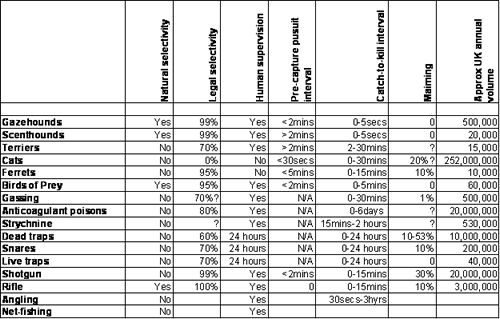
Table 1: A comparison of the methods and criteria
6.3. As well as the suffering caused to individual prey animals, it is relevant to look at the scale (figure 1.) The 378 registered hunts and unregistered packs in Britain kill approximately 20,000 foxes, hares, deer and mink.[21] In contrast, the 9 million cats in Britain[22] are estimated to kill at least 88 million birds and around 164 million mammals annually. In other words, for every animal killed by hounds, cats kill about 12,600 creatures. Not only this, but cats kill in such a slow way that they have been selected as the model animal for studies of aggressive predatory behaviour.[23] Cats also put into perspective the 3 million experiments on laboratory animals each year in Britain[24] and the 4 million migratory birds killed in Malta each year.[25]
6.4. It would be nice to have some firmer figures for these parameters, but meanwhile it is possible to make some simple, broad-brush analyses. For example, cats are responsible for about 82% of all kills. Hard data on some of these parameters are not available but these figures have been very widely circulated to all the main organisations since 1995 and the returning comments have not disputed them; indeed the recent Mammal Society Cat Survey results for cats are higher than ours. If you look at the parameter that you are interested in, such as the catch-to-kill interval, or maiming, and multiply it by the volume, you can see quite clearly where the major sources of suffering really exist.
| CAPTURE METHOD APPROX UK % ANNUAL VOLUME |
||
| Cats |
252000000 |
81.956 |
| Anticoagulant poisons |
20000000 |
6.504 |
| Shotgun |
20000000 |
6.504 |
| Dead traps |
10000000 |
3.252 |
| Rifle |
3000000 |
0.976 |
| Bird ringing |
660000 |
0.215 |
| Strychnine |
530000 |
0.172 |
| Gazehounds |
500000 |
0.163 |
| Gassing |
500000 |
0.163 |
| Snares |
200000 |
0.065 |
| Live traps |
40000 |
0.013 |
| Scenthounds |
20000 |
0.006 |
| Terriers x |
20000 |
0.006 |
| Ferrets |
10000 |
0.003 |
| Birds of Prey |
6000 |
0.002 |
| Angling (no data) |
|
|
| Total |
307481000 |
99.999 |
6.5. In attempting to reduce animal suffering as represented above, one must take into account the consequences of eliminating these methods. What would happen if rats and mice were allowed to proliferate unchecked? What would happen if deer and rabbits could not be controlled on farmland? What efforts would landowners make to maintain and improve habitat benefiting all wildlife if they obtained no sporting return? Would the alternative deaths awaiting the prey animals be preferable to the ones they have now?
7.1. Animals are usually killed because they are pests, or for food, or a recreational resource or combinations of these. The rabbit, for example, is all three. Some, such as foxes, can be a recreational resource in one locality and a pest in another. It can be difficult to agree on what is, and what is not ‘a pest.’ At present it seems to be more socially acceptable to kill some pests (such as rats) with dogs than to kill other pests (such as foxes) with dogs. Rats and foxes have equally developed nervous systems, and presumably experience similar levels of pain. The movement against foxhunting therefore must hinge, not on biological grounds, but on the perception that the hunters enjoy hunting. Many of the anti-hunting organisations are funded by cat-keepers who maintain that because they do not enjoy watching their cats mauling birds, they are therefore eliminated from the charge of cruelty. But the lack of human enjoyment is not relevant to the suffering animal, whereas the negligence of the owner, in preventing it, is.
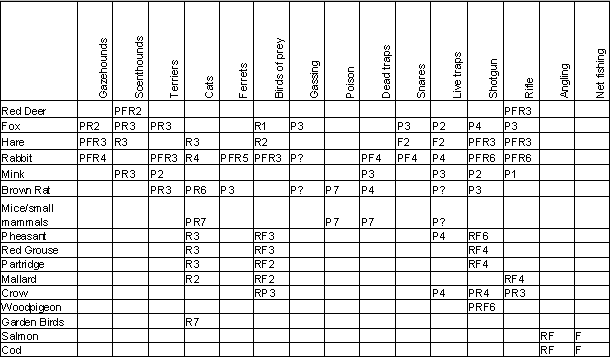
| Reasons for killing | Numbers killed |
| P= Population Management F= Food R = Recreation |
1 = 10 - 100 2 = 100 - 1,000 3 = 1000 - 10,000 4 = 10,000 - 100,000 5 = 100,000 - 1 million 6 = 1 million - 10 million 7 = 10 million - 100 million 8 = 100 million - 500 million |
Table 2: Reasons for, methods and numbers of wild animals killed annually in the UK.
Given that one of the legally acceptable reasons for killing wild animals is as a recreational resource, and that the enjoyment is derived from the total hunting experience rather than from the kill itself, it seems logical to maximise the experience benefit and minimise the amount of suffering or kills. This is a cost-analysis approach. Thus in hunting with hounds, or in falconry, many man-hours of leisure enjoyment are obtained per kill. One fox killed may represent around 100 people/days of hunting, not to mention ancillary activities. Shooting with a shotgun is intermediate, and ranges from cost-effective activities such as rough-shooting or wildfowling, to more killing-dependent activities such as driven game shooting, with 10.2 pheasants per shooter/day.[26] Pet cat keeping is the most cost-expensive recreational activity. In the UK, around 252 million deaths a year bringing no value whatsoever to cat-owners.
9.1. One can attempt to measure physical or mental suffering scientifically by quantifying some aspect such as blood chemistry or behavioural patterns. But what do such measurements mean?
9.2. Bateson stepped outside the limits of objective science in his study of red deer hunting by stating subjectively that the suffering he measured was ‘unacceptable.’[27] Others use the phrase ‘ not acceptable in a civilised society.’[28][ii] Whether the things that go on in cities are more civilised than what goes on in rural areas is a debate in itself. However social acceptability is a useable criterion if one attempts to measure it objectively rather than subjectively. By ranking the measured suffering (individual suffering x volume) in a variety of activities one can see a spectrum of levels of suffering. Logically, at some point in this list comes the limit of social acceptability.
9.3. Another route is to compare these levels of suffering with those seen in natural predation, for example, Bateson compared hound predation of deer with wolf predation. Another route is to compare these levels with other common life experiences. For example is a particular level of suffering in death better or worse than the suffering experienced during birth? How does the level of suffering in the animals deaths compare with the suffering involved in human deaths?
9.4. In reality our ‘civilised society’ is anything but logical. The keeping of pet cats involves high levels of wildlife suffering and yet is acceptable to many in our society, whereas the same people stigmatise the catching of mammals by dogs. If we are to make genuine progress in wildlife welfare these inconsistencies will have to be faced. A majority vote based on emotion rather than logic is no measure of social acceptability. One must look not at how people vote, but at what they actually do.
10.1. Unfortunately, few people attempt to evaluate these issues in any logical or scientific way, preferring to win hearts emotively rather than minds. The result is massive inconsistency and hypocrisy.
Efforts to change the status quo have largely been through confrontation rather than research. The major thrust by the anti-fieldsports lobby has been to push for legislation against fieldsports, and to do this it has of necessity concentrated on numerically small fieldsports which it might have some prospect of banning. Paradoxically, therefore, the legal efforts would have insignificant benefit to wildlife. For example, the recent legal efforts in Britain have been the MacNamara Bill 1993, the McFall Bill 1995, the Foster Bill 1998 which were essentially attempts to ban hunting of mammals with dogs. Considering that, of all mammals killed by cats and dogs in Britain, dogs only kill 0.4%, to exclude cats from the issue seems somewhat one-sided, particularly as a proposed safety clause would have removed rabbits and rodents from the Act.
10.2. Other aspects of wildlife welfare, such as poisoning, both of individual pest species such as rats, and of whole ecosystems with pesticides, have received proportionately very little public attention.
11.1. For a variety of reasons, we are unlikely ever to cease killing wild animals in Britain. The situation in which a large proportion of the human population live in cities (83% in UK) depending for their food supply on perhaps 5% of the population, is very artificial and unstable and in evolutionary terms, extremely recent and probably transient. Given the rate of human population growth and the massive ecological damage being inflicted on the planet, it is unlikely that the current precarious urban stability will be maintained for more than a few centuries. It is important therefore for us to develop proper wildlife management systems, to understand that our species is part of nature and not apart from nature, and to continue to use the hunting instincts which have been vital to us for millennia and could well become so again.
11.2. Whatever our reasons for killing wildlife, we must try to do it humanely, and that means minimising suffering as outlined above. We must minimise the amount of pain to each individual and we must minimise the numbers of individuals caused pain. Where wildlife is a recreational resource, priority should be given to maximising the hours of leisure enjoyment and minimising unnecessary killing. The only area in which there is wanton killing without any concomitant enjoyment is in the practice of allowing pet cats to range freely, killing protected wildlife at random. Legislation and research focused on this would provide the largest single reduction in wild animal suffering. Simply reducing predation by cats during the sensitive breeding months of April to July could reduce wildlife deaths by 100 million a year, the equivalent in one year of banning all hunting with dogs until the year 2,200AD.
11.3. From the legislative point of view, it seems unwise to legislate on individual aspects of wildlife management in Britain, such as some types of hunting with dogs, as a response to emotive pressure. Our investigation shows, above all, that full hard scientific data on these issues simply are not available and therefore the first priority should be a thorough scientific investigation into all types of pest control, fieldsports, fisheries and man-made factors impinging on our wildlife populations. These investigations should be designed clearly to differentiate between four individual aspects:
a) The management needs of populations (either to increase them, decrease them or stabilise them.)
b) The scale of suffering to individual animals in each activity.
c) The socio-economic costs and benefits of each activity.
d) Bringing the legal status of each activity into line with the three criteria above rather than on traditional notions of acceptability.
11.4. A confrontational approach to wildlife welfare and management is sterile and unproductive. It is time for all factions to meet together and discuss ways of improving wildlife welfare and conservation benefits without destroying either our cultural heritage and individual freedoms, or the management system which has maintained British wildlife in the face of increasing urban pressures.
Jim Barrington (Wildlife Network), Professor Tom Cade (World Center for Birds of Prey, Idaho); Dr Mike Nicholls (Durrell Institute for Conservation and Ecology, University of Kent); Dr Ken Felix DVM (quondam President of the North American Falconers’ Association), Mr Hal Webster (author); Mrs Jemima Parry-Jones (The National Birds of Prey Centre, UK), Dr Walter Bednarek (Germany), Mr Paul Llewellyn (University of Swansea), Dr Cecilia Lindberg (University of Bristol), Edmund Marriage (British Wildlife Management), spokespersons from the RSPB, RSPCA, The Game Conservancy, The British Association for Shooting and Conservation, The British Field Sports Society (now The Countryside Alliance); The Campaign for Hunting and the Pet Traders’ Association.
The author would like to thank all consultants but accepts sole responsibility for any statements made. The inclusion of a consultant’s name does not imply agreement with the contents of this report.
Further reading
Alexander, K. (Ed.) 1993. Bailey's Hunting Directory 1992-1993. Burlington Publishing Co Ltd.
Bateson, P. 1991. Assessment of Pain in Animals. Animal Behaviour 42: pp. 827-839.
Bateson, P. 1996. The Behavioural and Physiological Effects of Culling Red Deer. Report to the Council of the National Trust.
Biben, M. 1979. Predation and Prey Behaviour of Domestic Cats. Animal Behaviour, 27,1, 81-94.
Bijleveld, M. 1974. Birds of Prey in Europe. MacMillan, London.
Bird, D., Varland, D. and Negro, J. (Eds.) 1996. Raptors in Human Landscapes: adaptations to built and cultivated environments. Raptor Research Foundation/Academic Press, London, San Diego.
Bookhout, Theodore A. (Ed.) 1994. Research and Management Techniques for Wildlife and Habitats. The Wildlife Society, Maryland.
Bradshaw, J.W.S. 1992. The Behaviour of the Domestic Cat. C. A. B. International UK.
Cade, T. T., Enderson, J. H., Thelander, C. G. and White, C. M. 1988. Peregrine Falcon Populations : Their Management and Recovery. The Peregrine Fund Inc. Boise.
Caughley, G. and Sinclair, A.R.E. 1994. Wildlife Ecology and Management. Blackwell Science, Oxford.
Carlisle, G. L. 1983. Grouse and Gun. Stanley Paul, London.
Carruthers, P. 1992. The Animals Issue: moral theory in practice. Cambridge University Press, Cambridge.
Churcher, P.B. and Lawton, J.H. 1987. Predation by domestic cats in an English Village. Journal of the Zoological society of London 212, 439-455.
Child, G. 1995. Wildlife and People: The Zimbabwean Success. Wisdom Foundation, Harare, New York.
Clayton, M. 1989. The Chase: A Modern Guide to Foxhunting. Stanley Paul, London.
Cobham, R., Cobham, S, Mottram, N. and Piper, J. 1997. Countryside Sports: their Economic, Social and Conservation Significance. The Standing Conference on Countryside Sports, Reading.
Craighead, J. J. and F. C. Craighead. 1969. Hawks, Owls and Wildlife. Dover Publications.
Davis, J.W., Anderson, R.C., Karstad, L., and Trainer. D.O. (Eds). 1971. Infectious and parasitic diseases of wild birds. Iowa State University Press.
Dawkins, M.S. 1993. Through our eyes only? The search for animal consciousness. W.H.Freeman, Oxford, New York.
Game Conservancy Trust. 1996. The Game Conservancy Trust Review of 1995. Game Conservancy Trust. Fordingbridge.
Griffin, D.R. 1984. Animal Thinking. Harvard University Press, Cambridge and London.
Hallet, G. 1988. Land and housing policies in Europe and the USA - Routledge, London.
HMSO. 1981. The Wildlife and Countryside Act 1981. Her Majesty's Stationery Office, London.
Howard, W.E. 1990. Animal Rights vs. Nature. Davis, California.
Khalid, F. and O’Brian, J. (Eds.) 1992. Islam and Ecology. WWF World Religions and Ecology series, Cassell.
Lack, D. 1954. The natural regulation of animal numbers. Oxford University Press.
Lack, D. 1966. Population studies of birds. Oxford University Press.
Linzey, A. 1994. Animal Theology. SCM Press, London.
Medway, Lord. 1980. Report of the Panel of Enquiry into Shooting and Angling (1976-79). Horsham.
Moore, H.D.M., Holt, W.V. and Mace, G.M. (Eds.) 1992. Biotechnology and the Conservation of Genetic Diversity Zoological Society of London Symposia 64, Oxford University Press, Oxford.
Mudge, G.P. 1983. The incidence and significance of ingested lead pellet poisoning in British wildfowl. Biological Conservation 27: 333-372
Newton, I. 1979. Population Ecology of Raptors. T & A- D. Poyser Ltd.
Page, R. 1977. The Hunter and the Hunted. Readers Union, Devon.
Oelschlaeger, M. 1991. The idea of wilderness: from prehistory to the age of ecology. Yale University Press,
Paterson, D., and Ryder, R. D. (Eds.) 1979. Animals’ Rights - a Symposium. Centaur Press/RSPCA, London.
Potter, C. (Ed.). 1991. The Impact of cats on Native Wildlife. Proceedings of a Workshop 8-9 May 1991, The Endangered Species Unit, Australian National Parks and Wildlife Service.
Prescott-Allen, R. and Prescott-Allen, C. (Eds.) 1996. Assessing the Sustainability of Uses of Wild Species - Case Studies and Initial Assessment Procedure. IUCN, Gland, Switzerland, and Cambridge, UK.
Sainsbury, A.W., Bennett, P.M. and Kirkwood, J.K. The welfare of free-living wild animals in Europe: harm caused by human activities. Animal Welfare 4 (3) August 1995, pp. 183-206.
Sheppard, V. 1979. My Head against the Wall: A decade in the fight against blood sports. Moonraker Press, Wilts.
Skalski, J.R. and Robson, D.S. 1992. Techniques for Wildlife Investigation. Academic Press, London, San Diego.
Smith, J. A. and Boyd, K. M.(Eds). 1991. Lives in the Balance. Oxford University Press.
Taylor, M. B. (ed) 1996. Wildlife Crime. A Guide to Wildlife Law Enforcement in the United Kingdom. HMSO, London.
Thomas, R. H. 1983. The Politics of Hunting. Gower Press.
Travis, A. S. (Ed). 1980. Angling in Britain 1980: Report of the Travis Commission. The Angling Foundation.
Turner, D. and Bateson, P. (Eds). 1988. The Domestic Cat: the Biology of its Behaviour. Cambridge University Press.
Universities Federation for Animal Welfare. 1988. The Humane Killing of Animals.
Watson, J. N. P. 1991. A Green Guide to Country Sports. The Sportsman's Press, London.
[1] The Scott Henderson Report (19..)
[2] Bateson, P. 1996. The Behavioural and Physiological Effects of Culling Red Deer. Report to the Council of the National Trust.
[3] see: Linzey, A. (1992) and Khalid, F. and O’Brien, J. (1992).
[4] see, for example: Regan, T. 1979. Exploring the Idea of Animal Rights in Paterson, D. and Ryder, R.D (1979) pp 73-86.
[5] see: Dawkins, M.S. 1993.
[6] see: Bateson, P. 1991.
[7] Lord Medway. 1980. p.6: ‘As specific instances of the non-correlation of injury and suffering, Professor Wall cited his studies of Israeli military casualties of the October 1973 war - all persons who lost limbs. 70% of those victims felt no pain at the time of the amputation. All felt extreme pain the next day. These people were almost uniformly surprised at not feeling pain in spite of the obvious injury.’
[8] For an overview see: Caughley, G., and Sinclair, A.R.E. (1994).
[9] The number of marine mammals and diving birds killed through entanglement in fishing nets in European waters is thought to be in the 10,000 to 100,000 range. (Sainsbury 1995)
[10] Mudge (1983) estimated that 8000 mallards Anas platyrynchos die each year in the UK as a result of ingesting lead shot.
[11] Figure calculated using 1990 statistics from the Department of Transport,with reference to N.L. Hodson. 1959.
[12] Dr Walter Bednarek, pers. comm.
[13] see: Aebischer, N.J. 1997.
[14] In 1996 between £21,000,000 and £27,000,000 of venison, fish and game were provided to the U food market through fieldsports (Cobham, et. al 1997.)
[15] RSPCA statistics, RSPCA 1996
[16] See: Travis, A-S. (Ed). 1980. p12-14
[17] ‘Only the Huntsman, his whippers-in and the hounds are responsible for the pursuit of the fox. Everyone else may follow the hounds because they enjoy the ride across country, the access to large tracts of land otherwise unavailable to them, and watching the skill of the Huntsman and hounds working together. A view of the fox, the unpredictability of the chase, and the company of others who share their love of the countryside all add to the pleasures of the day.’ BFSS information pack1997
[18] Cobham, et al. 1997. p. 34
[19] Sainsbury, A.W., Bennett, P.M. and Kirkwood, J.K. 1995 p. 185
[20] ‘Those cases...which seem the most important in terms of the severity of the harm and the numbers of animals involved are not those which have received the greatest public attention.’ Sainsbury, A.W., Bennett, P.M. and Kirkwood, J.K. 1995 p.198.
[21] British Field Sports Society, pers.comm.
[22] ‘There has been a shift in pet ownership away from dogs to cats. In the early 1980s it was roughly eight million each. Now I’d say there are seven million dogs compared to nine million cats.’ Jack Westlake, RSPCA spokesman, cited in the Daily Express 29/12/1995
[23] see, for example: Biben.1979.
[24] 2,709,631 scientific procedures used animals in 1995. The number of animals used is slightly less as some animals are used more than once. From: Statistics of Scientific Procedures on Living Animals, Great Britain 1995. HMSO.
[25] see: Fenech, N. 1992.
[26] The Game Conservancy Trust. 1995
[27] ‘I acknowledge that the degree of suffering, which I regard as unacceptable, may not occur in every deer that is hunted. Even so, it is not possible to say in advance of a hunt whether an unacceptable level of stress is likely to occur. It is therefore necessary to act on the basis that the potential for an unacceptable level of suffering arises in any hunt.‘ Bateson, P. 1996. p.19
[28] Elliot Morley MP, pers. comm.
Conservation and Research
- Raptor Conservation
- The Peregrine Falcon
- Mauritius Kestrel
- Red Kite Conservation
- New Zealand Falcon Conservation Project
- Migration and Movements of Saker Falcons
- Falcon Genome Project
- Electrocution of Birds of Prey
The Saker Falcon
- The Saker Falcon
- Description
- Taxonomy
- Breeding Distribution
- Breeding Population Estimates
- Wintering Distribution
- Habitat
- Hunting and Diet
- Breeding and Biology
- Migration
- Conservation Status
- Conservation Threats
- Sustainable Harvest
- Conservation overview (HH Sheikh Zayed)
- Captive breeding & research
- Bibliography
- Satellite Tracking
- Reintroduction in Bulgaria
- Reintroduction in Bulgaria
- Mongolian Artificial Nest Project Information
- Mongolian Artificial Nest Project Articles

